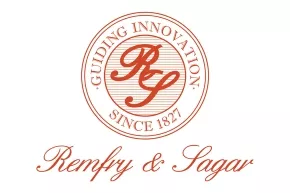- within Intellectual Property topic(s)
- with Senior Company Executives and HR
- in Europe
- with readers working within the Accounting & Consultancy, Technology and Retail & Leisure industries
- within Intellectual Property topic(s)
- in Europe
- in Europe
- in Europe
- in Europe
- in Europe
- in Europe
- in Europe
- in Europe
- in Europe
- in Europe
- with readers working within the Retail & Leisure and Law Firm industries
- within Intellectual Property, Privacy, Media, Telecoms, IT and Entertainment topic(s)
A rose by any other name may smell as sweet. A dish by any other name would still taste as good. But would it still sell as well? There is a sense of nostalgia when it comes to flavours. A single bite can invoke the deepest of emotions. Relationships are built over shared plates of food. In a country as diverse as India where culinary traditions shift every few hundred kilometers, each state boasts its own distinctive flavors, recipes, and signature dishes. Can elements of such a rich and varied gastronomic landscape be protected legally? After all, recipes are not just instructions; they are stories, memories, and cultural heritage. Illustratively, trademarks could play a vital role in preserving cultural heritage and promoting local food businesses on a national and global scale.
The Role Of Trademarks
In India's food industry, trademarks serve as vital tools to protect brand identities and origins. While restaurant names are routinely registered, it is less common—but increasingly important—for dish names themselves to be protected. For example:
- Dal Bukhara, registered by ITC, is now a well-known trademark.
- In 2024, Hyderabad's Roastery Coffee House secured "Cranberry Coffee by Roastery House" under Class 30.
- Chef Saransh Goila's "Goila's Butter Chicken" is registered under Class 43 for restaurant services.
These examples show how trademarks can transform signature dishes into legally protected assets, offering businesses a competitive edge in a crowded market. But this raises a fundamental question: Can a dish—a combination of widely available ingredients and traditional techniques—truly be owned by a single entity? The balance between protecting creative innovation and preserving culinary freedom is complex and contentious issues can arise.
The Butter Chicken Dispute
A recent example of this is the dispute surrounding 'Butter Chicken', a classical dish in Punjabi cuisine. Ranked among the world's best dishes by TasteAtlas, it traces its roots to early 20th-century Delhi. Two restaurant chains, Moti Mahal and Daryaganj, are now locked in a legal battle over claims to its invention.
Moti Mahal registered the tagline "Inventors of original dal makhani, tandoori chicken & butter chicken" in 2005. Daryaganj secured registered trademark rights over the line "By the inventors of butter chicken and dal makhani" in 2018, leading to opposition at the Trade Marks Registry and a suit before the Delhi High Court in 2024. Interestingly, Moti Mahal clarified in court that they do not want to prevent others from serving butter chicken (standard fare in every restaurant serving North Indian cuisine); their claim is only to protect their legacy.
This dispute exemplifies how trademarks can be used to assert historical and reputational claims over dishes, even if the recipe itself is widely available.
An alternative method of protection may lie in giving a dish a distinctive name. A chef or restaurant may then secure legal protection against others using the same branding—even if they cannot prevent replication of the underlying recipe. The dish itself may remain in the public domain, but its name becomes proprietary. Consider examples from the United States:
- Frappuccino (Starbucks) and Cronut (Dominique Ansel) are trademarked terms, even though similar recipes can be created by others.
- Major fast-food chains like McDonald's and Burger King have trademarked Big Mac and Whopper Jr., protecting not the recipe but the powerful brand association.
Recipes, Trade Secrets and GIs
That said, fast food restaurant chain KFC uses the KFC Original Recipe - a secret mix of ingredients – for its fried chicken. This is an example of trade secret protection of a recipe.
In the Indian context, it is quite commonplace for recipes to have passed down through generations - these are often closely guarded, handwritten, and shared only within families or trusted circles. However, such 'family secrets' don't quite fit the matrix of formal trade secret protection which mandates confidentiality, economic value due to secrecy, and reasonable efforts to maintain secrecy.
Beyond trademarks, India's Geographical Indications (GI) Act offers another layer of protection—focused not on individual brands but on collective heritage. Famous examples include Darjeeling Tea and Basmati Rice. Then there is the mouthwatering sweet white dumpling made from cottage cheese – Rosogolla – over which two Indian states - West Bengal and Odisha – stake a GI claim.
GIs preserve the authenticity and reputation of region-specific products by legally linking them to their geographical source. They protect collective cultural property, helping rural economies and preserving traditional knowledge. However, GI protection is territorial. Outside India, unless the GI is registered or reciprocally protected, misuse or cultural appropriation is harder to challenge.
Conclusion: Globalisation and Cultural Appropriation
In conclusion, broader questions arise about cultural appropriation. For example:
- The "turmeric latte" trend in Western wellness circles rarely acknowledges its roots in India's age-old haldi doodh remedy.
- "Chai tea" and "naan bread" appear on menus globally, often stripped of context or authenticity.
- Japan's matcha and Mexico's tacos have also been extensively reimagined for international markets.
These cases reveal a tension between globalization's openness and the risk of commodifying cultural heritage without respect or benefit-sharing.
An inclusive global framework remains elusive. While initiatives like UNESCO's List of Intangible Cultural Heritage recognise gastronomic traditions (such as French and Mexican cuisine, Turkish coffee culture), India's rich culinary heritage is absent.
Protecting this heritage is not about locking it away but about ensuring recognition, authenticity, and fair benefit. As the industry evolves and global conversations about cultural appropriation grow louder, finding balanced, respectful legal solutions becomes ever more important. Intellectual property law—through trademarks, GIs, trade secrets, and potentially new international frameworks—has a vital role to play in this unfolding story.
The content of this article is intended to provide a general guide to the subject matter. Specialist advice should be sought about your specific circumstances.



